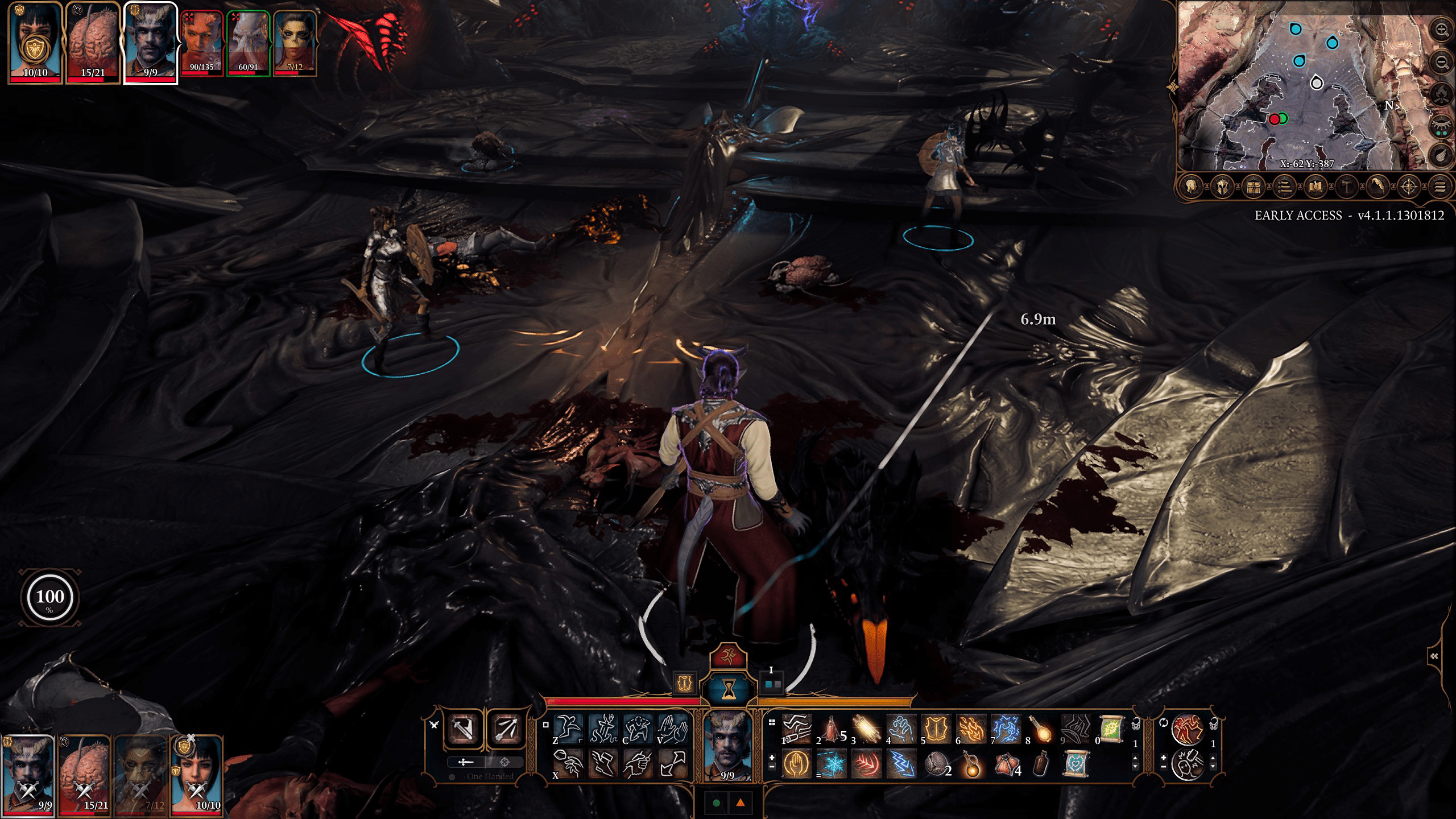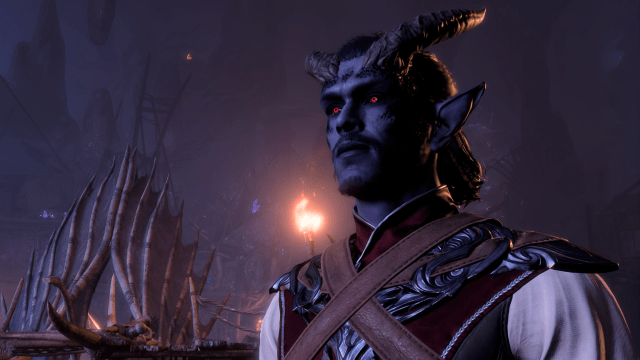As I’ve been able to get back to more physical nerdy hobbies recently, one area I’ve not quite ventured back into is playing tabletop RPGs in person. This is, in part, because, unlike Warhammer, it’s been much easier to play something like Dungeons & Dragons remotely (due to the pandemic or otherwise). But it’s also for another reason: I’ve been kind of getting my D&D fix elsewhere recently.
Larian Studios’ Baldur’s Gate 3 — the long-awaited, highly ambitious third entry in the iconic Dungeons & Dragons CRPG franchise that first began in 1998 — has been in “Early Access” (essentially an extended beta/feedback period) for just over a year now. After months of tweaks, additions like new classes and areas, and plenty of fixing, it’s in pretty good shape right now, even if there’s more work ahead. I should note, the early access is only part of the opening act, of three in total, and even then I’ve sunk about 40 hours into it already. Utilising a modified iteration of D&D’s current Fifth Edition ruleset as a framework, it balances a mix of Larian’s past CRPG knowhow — it made the Divinity Original Sin games, two of the most beloved games in the genre in recent memory — with the mechanics of contemporary D&D, which has been fun to visit in game form, considering the past Baldur’s Gate games were old enough to be built off of Advanced Dungeons & Dragons’ Second Edition.

It’s this mix that has kept me returning to Baldur’s Gate 3 with each major patch over the last year (its sixth, which added a new area to explore, and the Sorcerer class, launched earlier this month). I’ve been playing the same slice of content, with the same level cap, just to see what I could do differently this time around. Most video game RPGs tout that they’re games that offer choice: story consequences, customisation, growth, and empowerment of your character’s stats and gear. But Baldur’s Gate 3’s inventive mix of D&D’s rules — both in and out of combat, with the freedom of mechanical and narrative choice Larian explored in Divinity — has helped the game replicate a sort of ramshackle tabletop experience that feels true to playing a campaign of D&D with your friends, instead of simply just going on a big, heroic adventure.
That’s not to say you don’t do that: the game’s main premise and opening deals with you being abducted, alongside the characters that eventually form your main party, by a Mind Flayer vessel and subjected to a torturous process that sees an Illithid tadpole buried into your brain. Said tadpole is how Mind Flayers make more Mind Flayers, quickly and excruciatingly enthralling you as you turn into one of the tentacled psykers… or at least, it should. As you and your fellow party members discover — if you recruit them, that is — something has happened to you all in the process that has heavily slowed the transformation rate. But it’s also given you some level of dominance over the tadpole, letting you use it, in turn, to risk losing a little more control in favour of unleashing powerful abilities. So while you’re all in a rush to find a healer who can extract your tadpoles before it’s too late, you’re not in too much of a rush, as you escape capture and proceed to head out into the Forgotten Realms, caught up in the turmoil after the events of the Descent Into Avernus Fifth-Edition campaign as you explore and help myriad groups along the way in your search.

But that’s only really the catalyst for the kind of freedom that makes Baldur’s Gate 3 shine and makes it feel so much like a typical tabletop campaign game in the first place. There is always a sense of charming chaos to how the game plays. Conversations are shaped by your character’s skills (or lack thereof) and dice rolls, making them open enough that you can play the same scenarios very differently depending on how things go. Combat, meanwhile, mixes turn-based D&D hack-and-slash (or spell-slinging depending on your class) with smart, physics-based use of bonus actions like shoving people off ledges or throwing around bottles of grease to light afire with a torch moments later. You don’t just remember a combat encounter because it was a challenging fight, but because of the kinds of weird, creative shenanigans you might get up to in order to scrape out a victory. (Combat is restricted to just level 4 in Early Access. Basically, any combat encounter in BG3 feels a little more deadly than it should: if you didn’t die at least once during the first non-tutorial encounter with a few piddly mindflayer brain minions, I doff my hat to you.)
It’s always funny when, say, your Githyanki fighter Lae’zel uses her enhanced jump to leap atop a building and merrily punt a goblin to their doom, undone not by her longsword but the most dreaded of all D&D encounters: fall damage. Or, out of spell slots, you manage to clear a room by hurling a satchel of Saltpetre (sodium nitrate) — something yyou randomly found exploring an area hours beforehand — at a brazier, bracing in the hope that none of your party are close enough to get immediately leveled by it. It’s even funnier when you manage to bullshit your way out of a conversation because you scraped by on a persuasion check, turning a situation completely on its head.

Baldur’s Gate 3 isn’t just driven by its own story, but the ones you tell within its loose framework — amplified all the more in its multiplayer, where friends can take on the slots usually filled by your AI party members with their own characters, at which point it really just is you playing a virtual game of D&D. This willingness to embrace the flexibility of Fifth Edition’s current form, and push it even more than tabletop does, strikes a fine balance for Baldur’s Gate 3, not just as a video game, but a quasi-replacement for an in-person session of dice-rolling. Sure, you could play it self-seriously, a group of unlikely heroes who don’t quite care for each other forced to team up and save the day. Or you could just goof around a bit, with a knowing sense that Baldur’s Gate kind of wants you to be a gang of chaotic fuckups barely scraping by the skin of their teeth as they bumble through Faerun.
It’s that knowing silliness that has kept me coming back again and again to Baldur’s Gate 3 in its unfinished state, even when major new patches often come with the necessity of having to wipe your character and start all over again. By embracing the charms and chaotic energy of the best kind of tabletop experiences in its sandbox, I won’t mind if it takes me a little bit longer to get back to playing D&D and other RPGs in person again — I’m having a little bit too much fun with it in a virtual sense right now, anyway.
